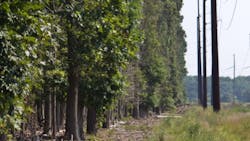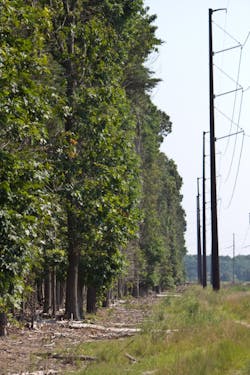Herbicide Application Checklist: Know Your Target, Know Your Equipment
Proper stewardship of nonagricultural-use herbicides during brush and weed control applications is necessary for the long-term viability of herbicide programs in the vegetation management industry.
Understanding the risks associated with applying nonagricultural-use herbicides helps minimize potential off-target injury to desirable vegetation. Providing for proper herbicide performance through training and education results in economic, aesthetic and environmental benefits to the treatment site. The following checklist will help develop minimized-risk and high-benefit herbicide programs.
Always read and follow label directions, use precautions and restrictions. This information is not intended as a substitute for product labeling.
- Select the proper equipment for the spray job.
- Use the proper nozzle type and recommended spray pressure for accurate herbicide placement.
- Calibrate equipment periodically for spray output accuracy.
- Use a drift control agent if instructed by product labeling.
- License and certify application personnel as necessary.
- Maintain detailed spray records of all treatments.
Chemical Selection
- Understand chemical properties such as solubility, mobility, persistence and volatility.
- Match the vegetation to be controlled with correct herbicide(s), use rate and application timing.
-
Evaluate the performance at the end of the season to consider any program upgrades needed.
Target Area Stability
- Sites disturbed by mechanical means or vehicle traffic may lead to herbicide ineffectiveness or possible movement to off-target areas.
- Know soil texture or road ballast composition as it relates to wind or water erosion potential.
- Treat asphalt or concrete surfaces only if specifically directed by product labeling.
Environmental Conditions
- Applications during high wind, high temperatures and low humidity may increase the potential for off-target drift.
- Be cautious of passing vehicle wind shear, particularly from large trucks, when spraying.
- Understand local weather patterns to determine proper timing for the herbicide treatment.
- Applications made to saturated or frozen soils, or just prior to heavy rainfall, may have greater potential for off-target movement.
- When making herbicide applications to slopes, heavy rainfall may increase the potential for movement to nontarget areas.
Site-Specific Considerations
Careful evaluation of the potential for off-site movement of treated soil by wind or water erosion must be made prior to using nonagricultural herbicide products. This evaluation is particularly critical when neighboring land contains desirable vegetation or crops for which the product is not labeled.
Adjacent Vegetation and Property
- Know the chemical sensitivity of adjacent vegetation, crops and ornamentals.
- Use caution when making treatments next to agricultural crops.
- Know the sensitivity of your site and do not use non-crop herbicides in any ornamental planting, home or park area unless so labeled.
- Be aware that tree or plant roots may extend or grow into a treatment area. Applying nonagricultural-use herbicides and draining or flushing equipment on or near these treatment areas may result in injury or loss of desirable vegetation.
Realize the Difference With DuPont
DuPont herbicides can be great tools to help you provide uninterrupted power supply to the public while keeping encroaching brush out of rights of way. These herbicides also help you to manage the safety issues associated with uncontrolled weed growth along roadsides or the elimination of environmentally degrading invasive weeds.
DuPont is committed to providing the information and resources necessary to support the continued use of existing products as well as the development of new technology to meet future weed and brush control needs.
More Information
A full calibration and user guide is available at landmanagement.dupont.com, including a checklist for applying nonagricultural-use herbicides, techniques for calibrating liquid and granular spraying equipment, common conversion factors and other useful information. See your DuPont representative for printed copies of the guide.
For more specific application guidance on how to incorporate DuPont herbicides in your brush or weed control programs, please refer to their federally approved labels or contact your local DuPont sales representative. To find label information for any DuPont herbicide, click here.
Always read and follow all label directions and precautions for use.
Copyright © 2014 E.I. du Pont de Nemours and Company. All Rights Reserved.

